Old procedure - just sum up the light output from all TDCwise fired segments on a arm. When an accidental/physical neutron fires some segments, the correlation between 1/&beta and total light output as proton/deuteron would be broken. The proton+neutron event contaminates deuteron. PB Light output is just calculated from the segment gives 1/&beta / max light output.
New procedure 1 - improvement on NT. The light output is summed up only if fired PB segment and NT row is consistent.
Black: all with new procedure.
Red: all with old procedure.
Green: proton/deuteron component with new procedure.
Magenta: proton/deuteron component with old procedure.

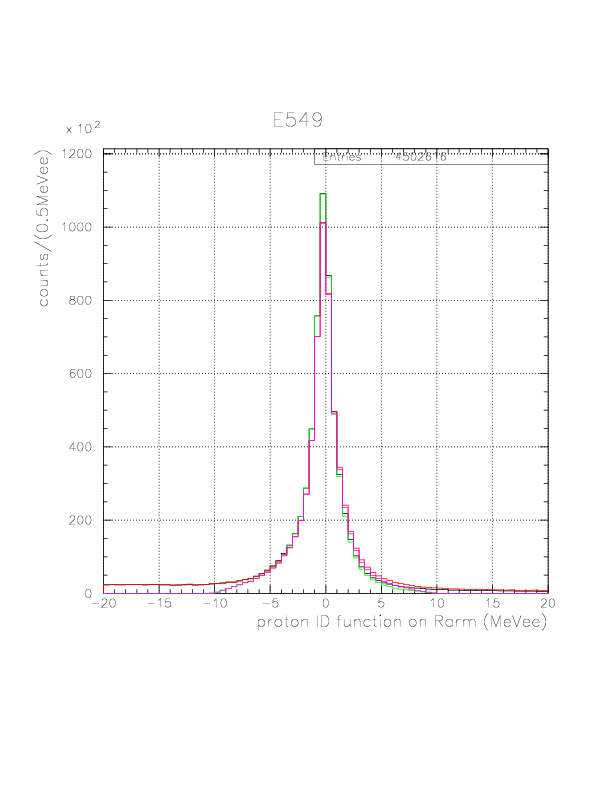
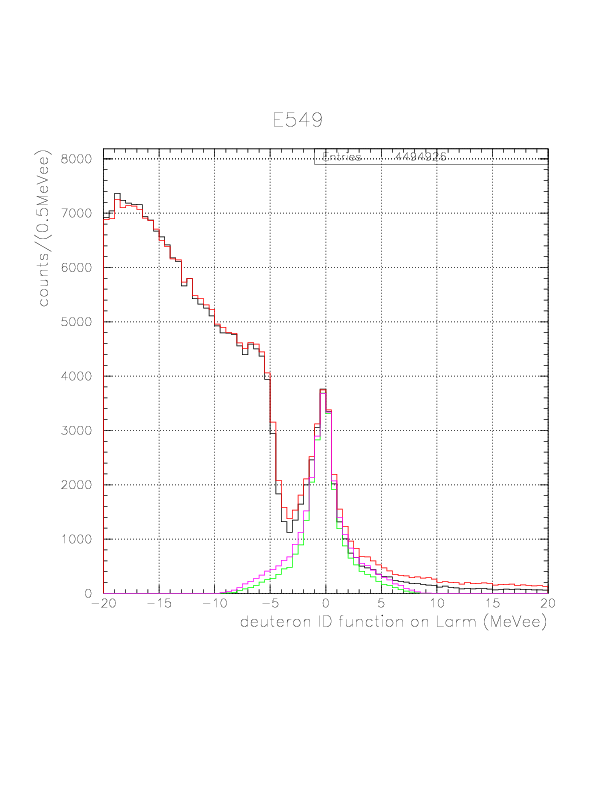
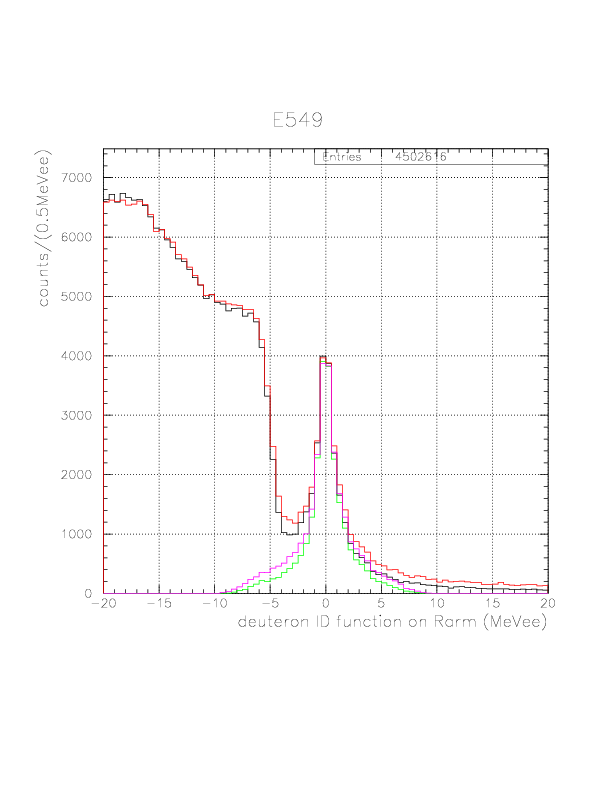

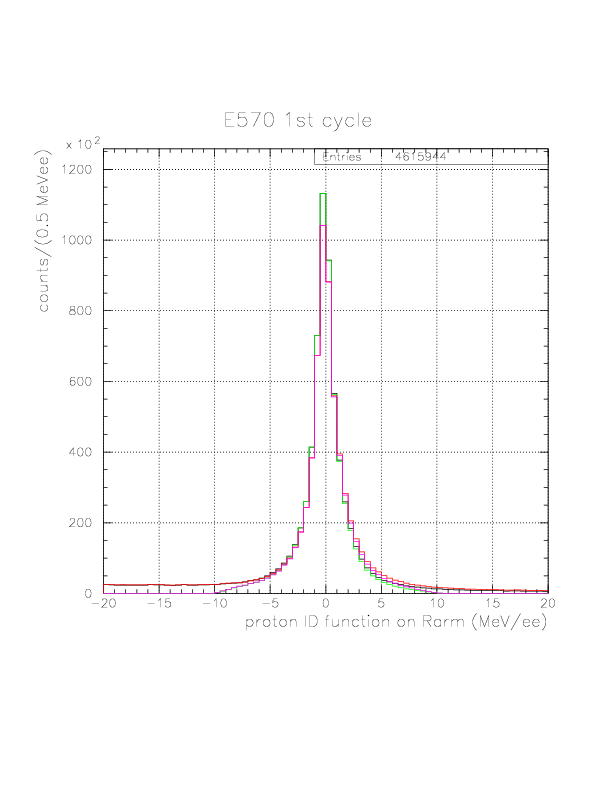
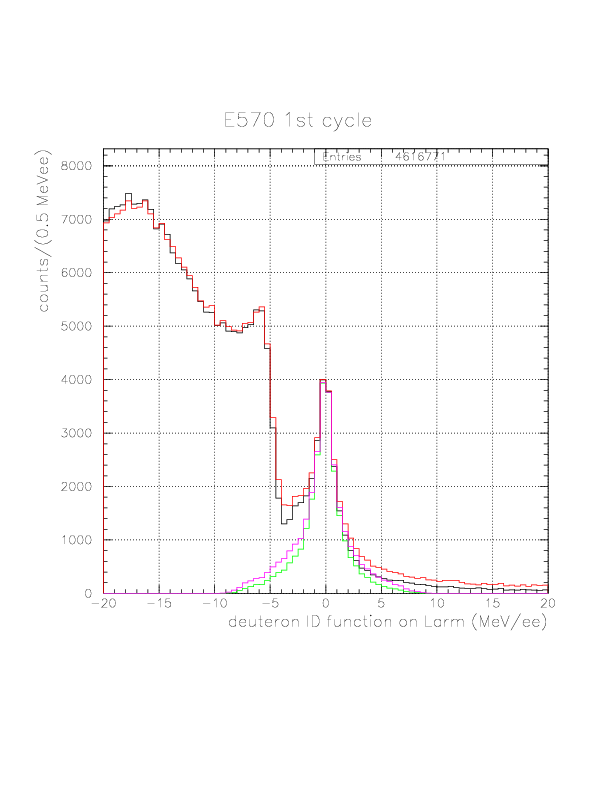
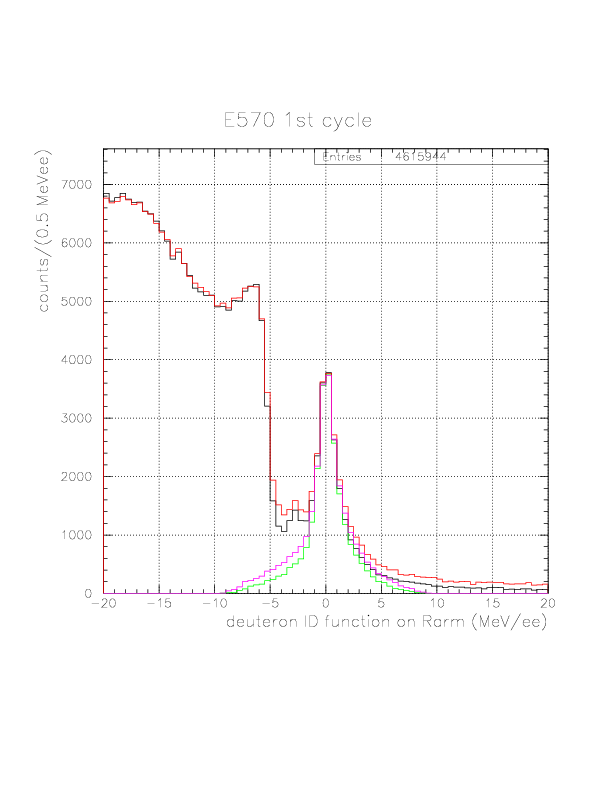



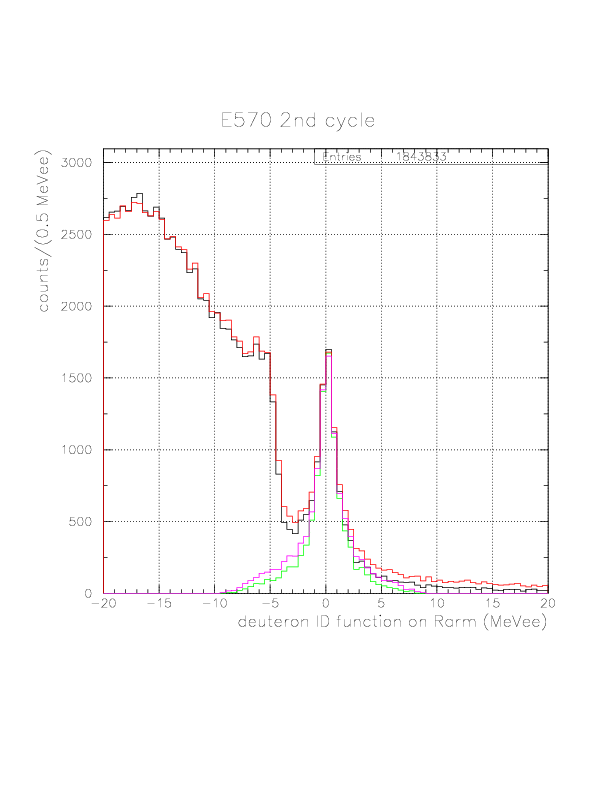
The cycle-by-cycle proton/deuteron yield with old/new selection procedures are tabulatted below.
| Arm/cycle | E549 | E570 1st cycle | E570 2nd cycle |
|---|---|---|---|
| Larm | p:609386->618070 d:28423->24290 | p:623676->632709 d:29126->24801 | p:250051->253447 d:11577->9912 |
| Rarm | p:595332->602727 d:27613->23479 | p:611346->619919 d:27853->23581 | p:242712->245819 d:11009->9398 |
Black: with old procedure.
Red: with new procedure.
Green: spectrum with old procedure - spectrum with new procedure
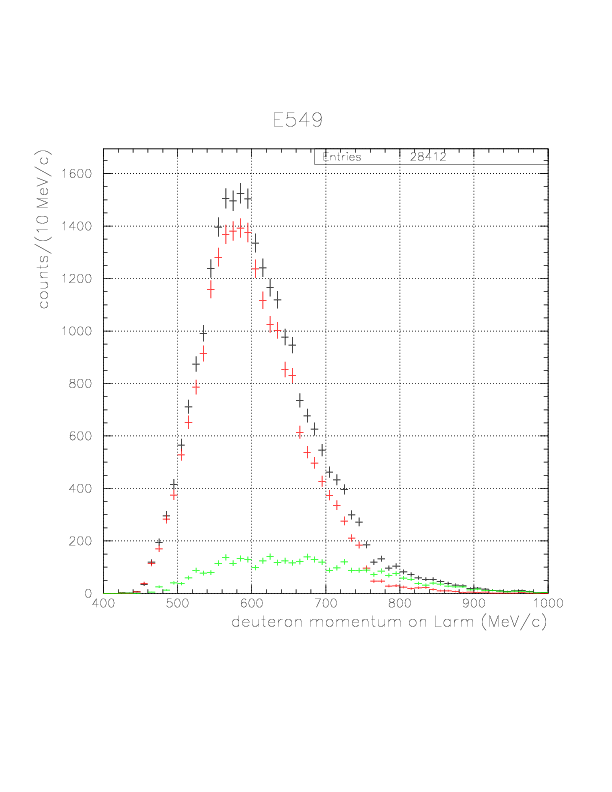
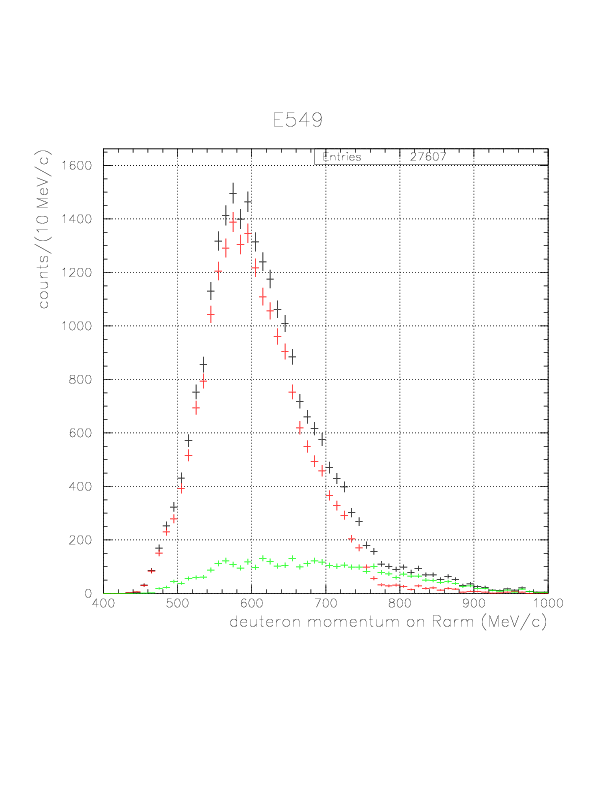
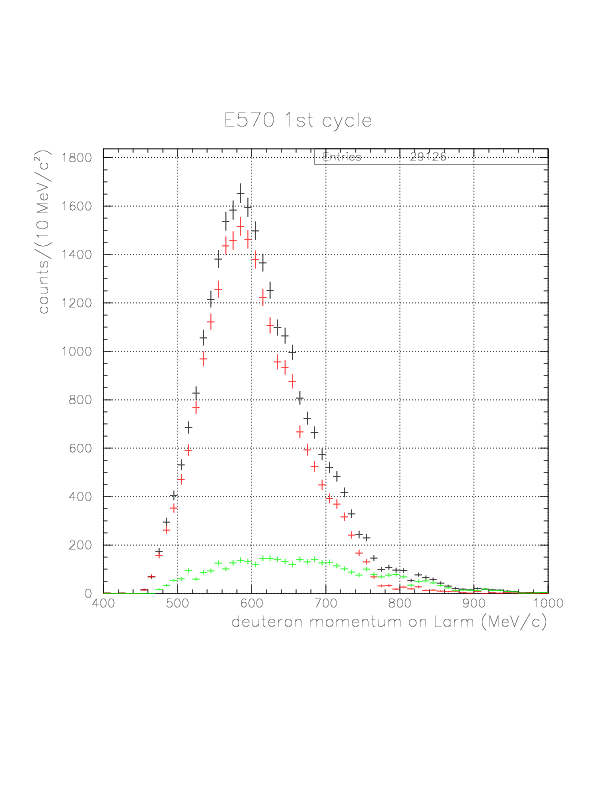
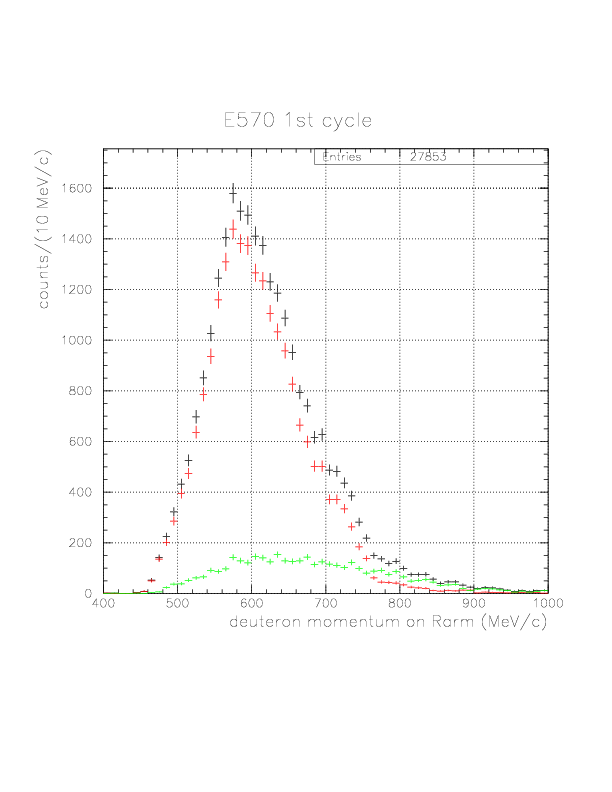

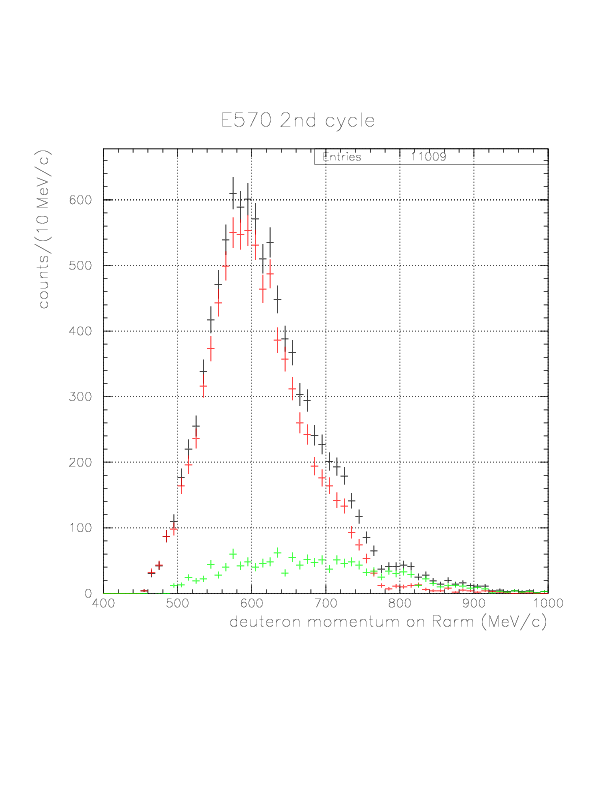

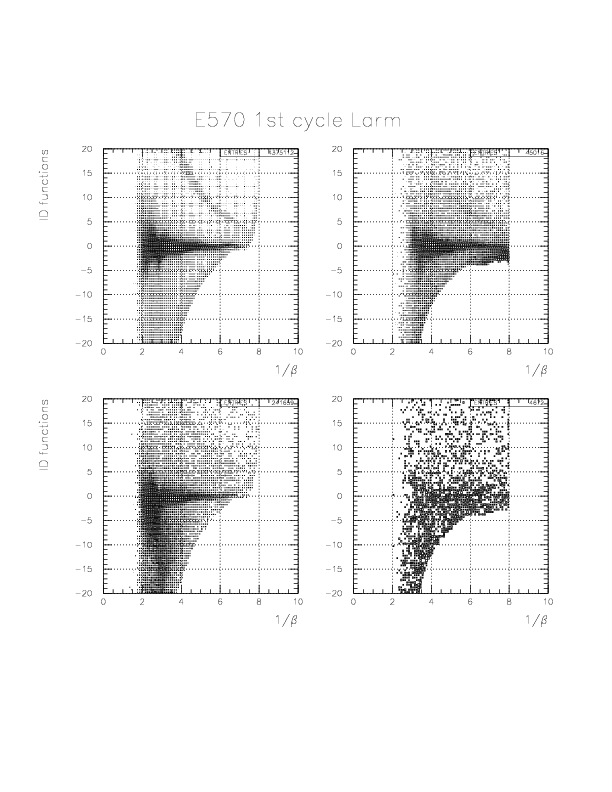
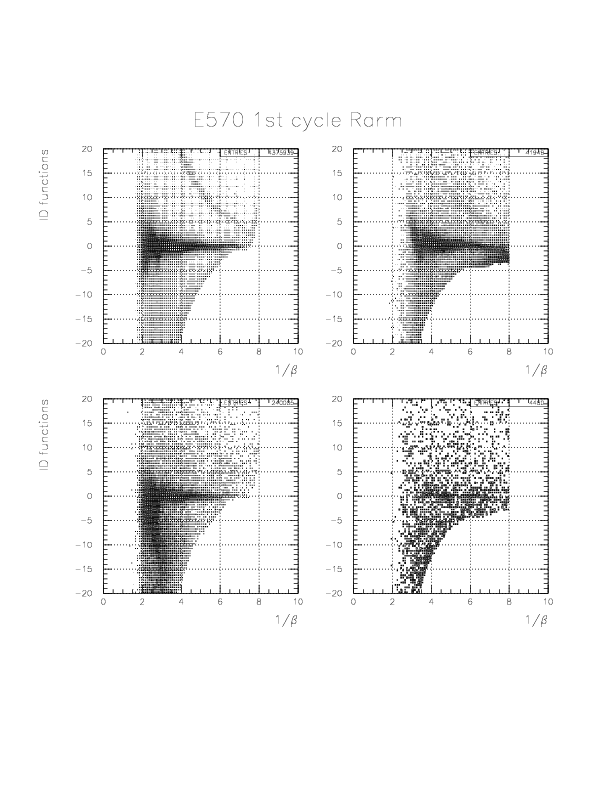
The lower-tail component on the multiplicity more than 2 is due to the lack of the light output from PB segment fired at the same time, being located just next to the segment which gives max energy loss and stop timing on PB. Therefore, we try to sum up the contribution from the segment. The result is shown below.
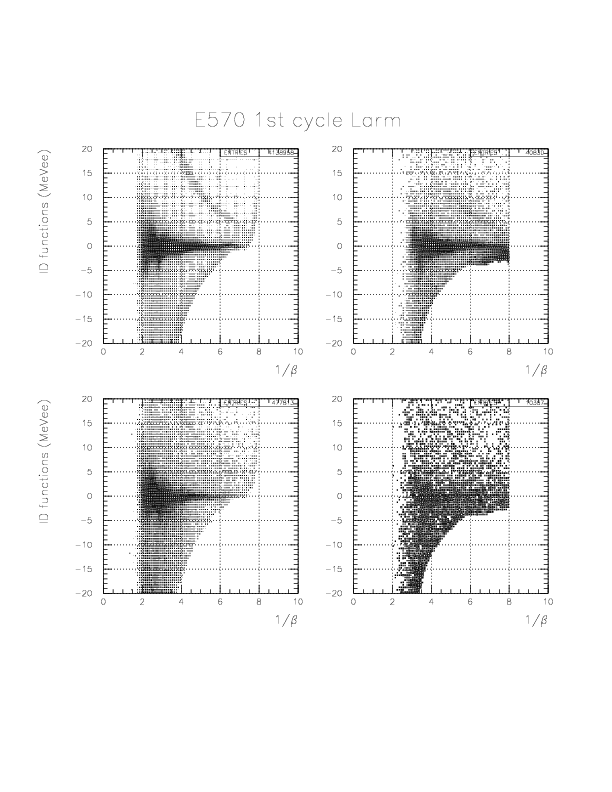
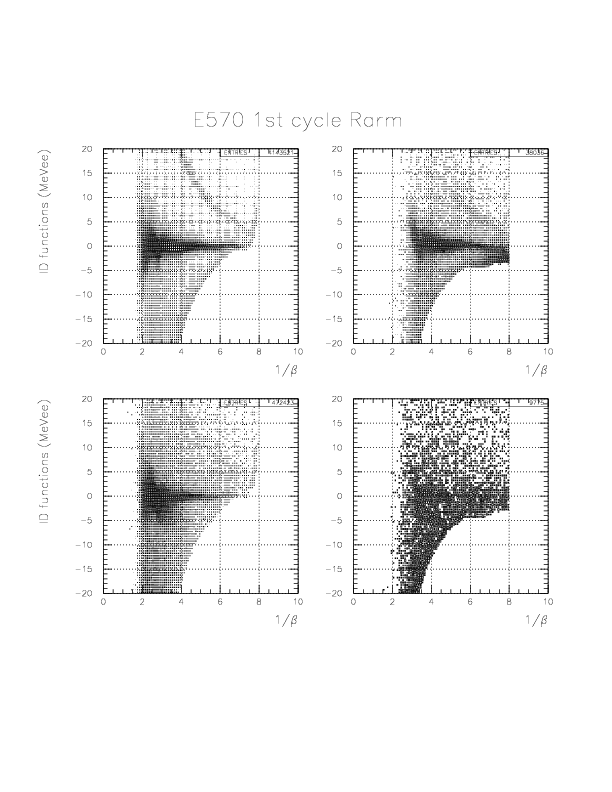
The lower tail dissappeared now. Hereafter, we adopt this improvement to calculate total light output on side arms. The cycle-by-cycle proton/deuteron yield with old/new selection procedures are tabulatted below.
| Arm/cycle | E549 | E570 1st cycle | E570 2nd cycle |
|---|---|---|---|
| Larm | p:618070->624037 d:24290->24704 | p:632709->638313 d:24801->25229 | p:253447->255742 d:9912->10103 |
| Rarm | p:602727->608784 d:23479->23925 | p:619919->626327 d:23581->24000 | p:245819->248300 d:9398->9590 |
We try to improve PID procedure a little bit more. Until now, the summation of light output on NT is taken just checking row ID, as was introduced on the section for new procedure 1. Now, we treat them more carefully as follows:
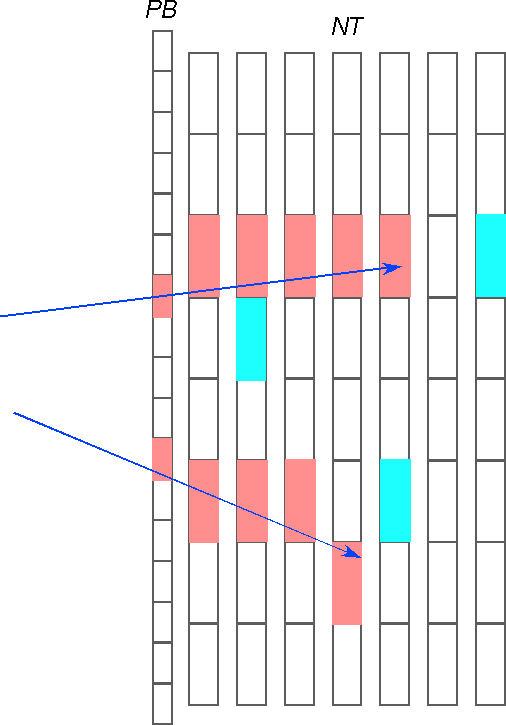 The resulting proton/deuteron yield and deuteron spectra are shown and compared to old results below.
The resulting proton/deuteron yield and deuteron spectra are shown and compared to old results below.
| Arm/cycle | E549 | E570 1st cycle | E570 2nd cycle |
|---|---|---|---|
| Larm | p:624037->624478 d:24704->23744 | p:638313->638939 d:25229->24037 | p:255742->255977 d:10103->9692 |
| Rarm | p:608784->609277 d:23925->22869 | p:626327->626942 d:24000->22932 | p:248300->248339 d:9590->9185 |
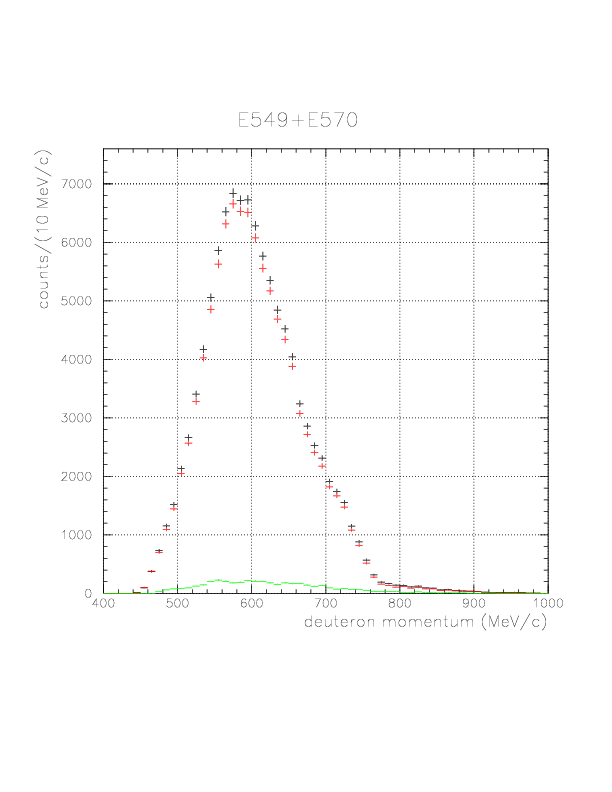
Hereafter, we activate all of 3 procedures for PID of proton/deuteron.